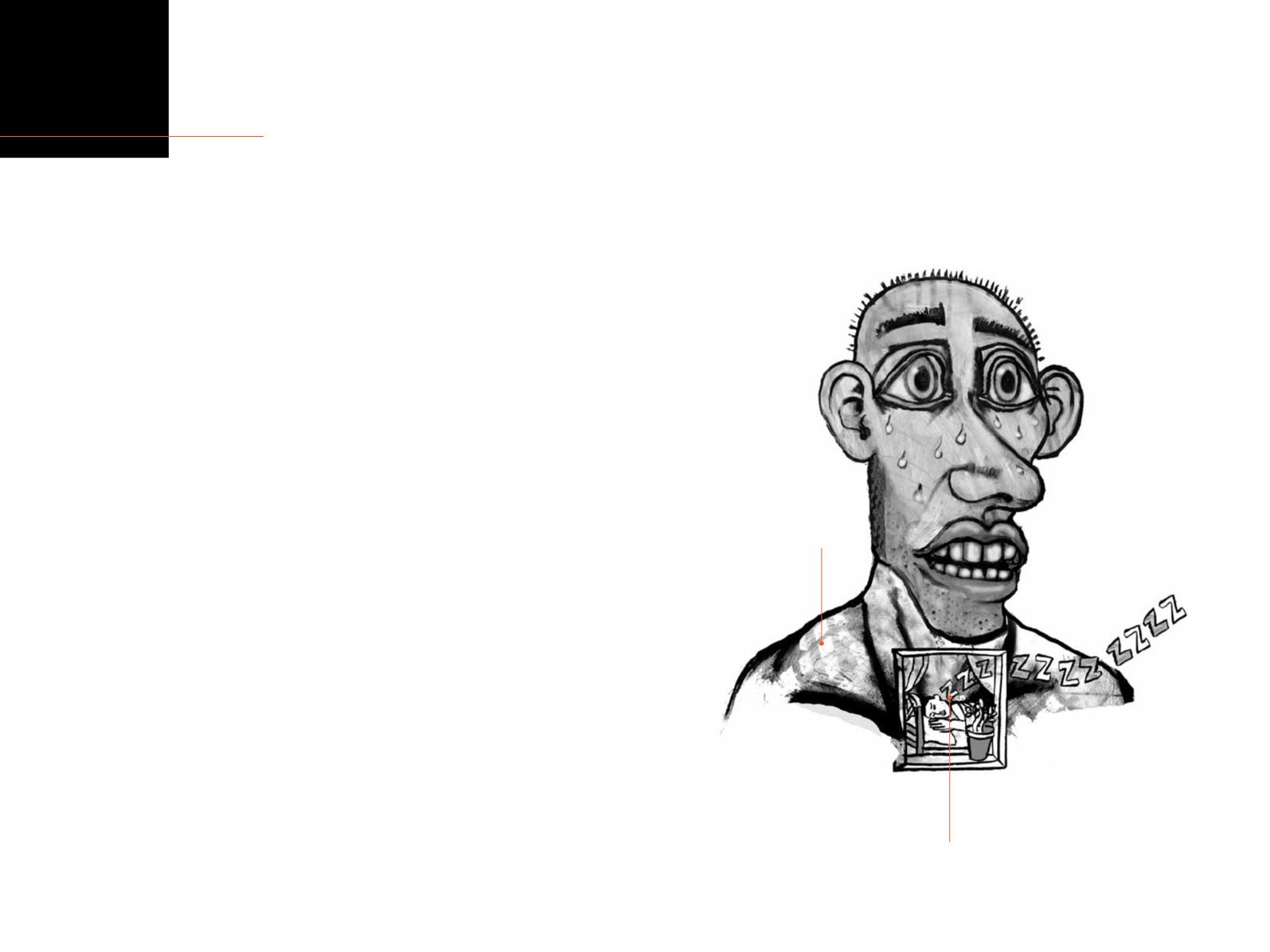
explain
pain
section
4
page
90
Movement strategies
W
e have learnt that the brain produces pain to
motivate you to protect your body. The brain also
‘primes’ muscles to help you escape. This is great in
the short term – you get ready to run away or fight
by ‘priming’ your big longmuscles such as a
hamstring or a trapezius as in the image. These
muscles are best suited to this job because they can
produce a great deal of torque (torque is the twisting
force that makes jointsmove), partly because they
crossmore than one joint and partly because they
can shorten a great deal.
In the long term, continued and overactivation of
thesemuscles is not smart. As a general rule, when
thesemuscles stay active for a long time they tend to
contract, there is a build-up of acid (see page 48),
and they start to feel ‘stiff’. It’s a bit like sprinting a
marathon. However, if the longmuscles are turned
on, the shorter ones, for example the stabilising
muscles between vertebrae, go to sleep – there is no
need for them if you are trying to avoid danger.
long muscles
tighten
short muscles weaken


